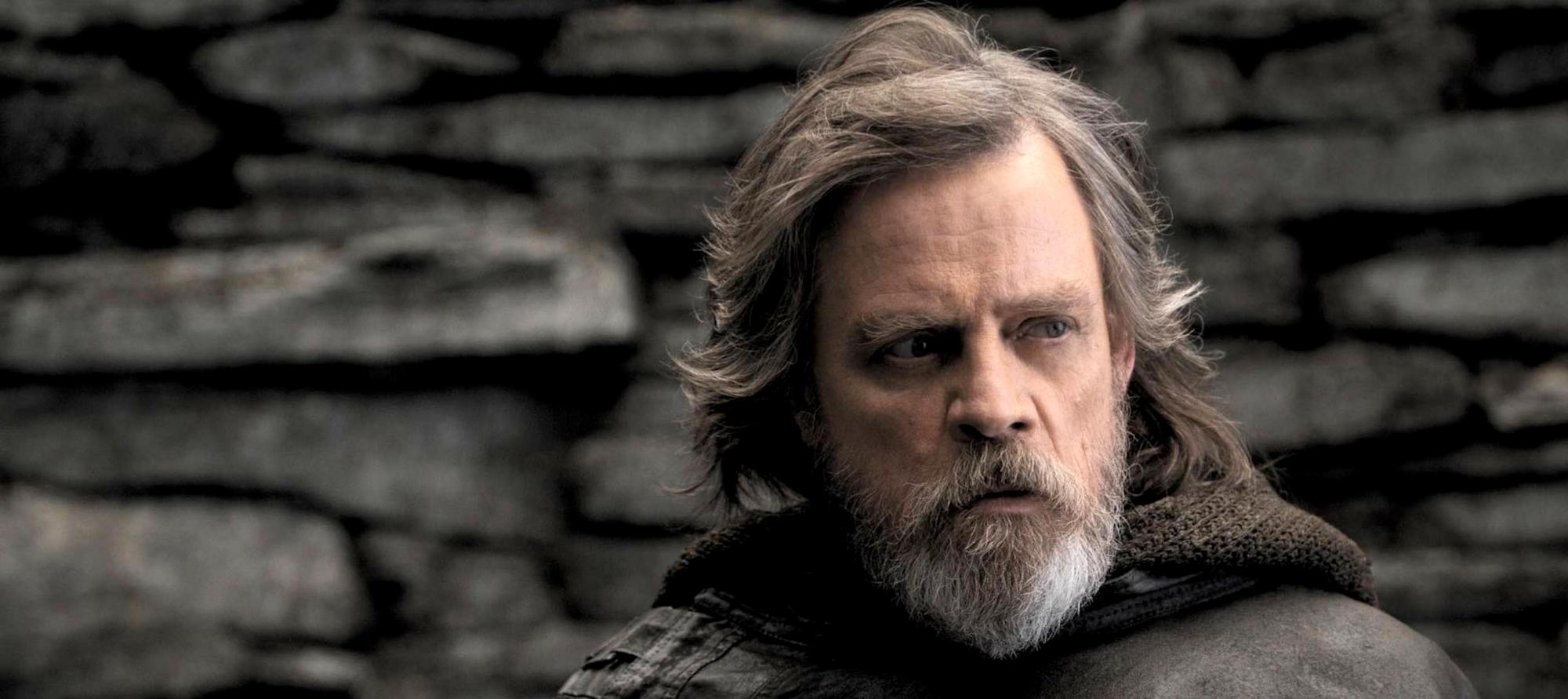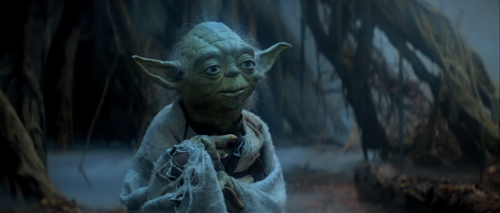
It’s really tempting to dismiss December’s new Star Wars movie premiere tradition as the same-old same-old. Three years into this new chapter, and one worries the franchise is falling into the same pattern as the Marvel movies we all have trouble keeping up with. Good guys, bad guys, heroes, villains, you’d be forgiven for writing it all off as a film studio’s easy money or an exercise in blissful nostalgia. It’s an easy critique of 2015’s The Force Awakens, which some panned as an unoriginal remix of A New Hope (a major critique that soured me on the film).
Thankfully, The Last Jedi takes Star Wars into fresh territory, a secret hinted at in The New York Times’ review of the film:
Mr. Johnson largely succeeds despite having inherited an elaborate ecosystem with a Manichaean worldview divided between heroes (the Resistance) and villains (the First Order).
As the sentence alludes, the film’s great strength comes from a subtle rejection of that Manichean worldview a la St Augustine. Our good guys are still good, our bad guys are still bad, but in The Last Jedi, unlike the other Star Wars films, it’s complicated.
Spoilers Ahead!
The movie’s opening sequence shows ‘flyboy’ Poe Dameron executing a daring plan to help The Resistance evacuate their base. Though Poe’s plan succeeds, the losses are great, and he is chastised by General Leia for winning a battle but putting the war at jeopardy. Despite the success of their escape from The First Order, the bad guys have new technology which allows them to track the struggling Resistance fleet, setting up a dramatic space standoff that spans the movie’s second act. The impatient and cocksure Poe secretly plots with colleagues Finn and Rose to end that standoff, setting the two up with their own b-story side mission.
Finn and Rose’s trip to the casino city to find a code-breaker and disable the First Order’s tracking technology is generally looked at as the film’s weakest story line–and it’s hard to argue. When the duo fail to snag the professional code-breaker (Justin Theroux!) and have to settle for the jaded and tweaked out DJ instead, it felt like we were being set up for a classic Star Wars Hail-Mary victory. In the Manichean Star Wars universe, this long shot plot would have ended like the original Death Star rescue or the Jabba’s Palace scenes from Return of the Jedi. But when DJ ‘pulls a Lando’ and betrays Finn and Rose to the First Order, they are captured and almost executed, saved only by circumstance.
There’s a dual humbling going on here, with the heroes being reminded of both their weakness and their smallness. Poe, Rose, and Finn, AKA the good guys, end up captured, committing mutiny, stunned, and defeated. Even Finn’s final act attempt at heroic self-sacrifice is cut short. For the first time in Star Wars, we see good guys failing because they aren’t good enough. It’s a sign that things are more complex in this new Star Wars universe.
The movie’s greatest humbling, however, is reserved for the its most iconic hero. We discover that Luke Skywalker has gone full Obi-Wan and sequestered himself on a deserted island, hoping to die and take the Jedi religion (his words!) to the grave. While his initial justification for ending the Jedi has to do with history and hubris, we soon discover that it’s his own failing that’s really driving the self-imposed exile. When Ben Solo/Kylo Ren was a student at Luke Skywalker’s Jedi Academy for Gifted Youth, slowly making his way to the Dark Side, Luke transgressed his Jedi code. Overwhelmed with fear, he briefly considered executing his nephew to keep another Darth Vader from terrorizing the galaxy. When Ben realized what Luke was thinking, he attacked him, destroying the academy and fleeing to bad-guy Snoke, ironically, becoming another Darth Vader and terrorizing the galaxy.
My primary gripe with The Force Awakens was how unoriginal it was (desert protege finds secret plans in a robot, planet destroying weapon infiltrated and blown up, etc.). That derivative strain exists in The Last Jedi as well (evacuate the base, Jedi training, drama in space, casino city, betrayal, walker battle on a white planet). In this sense, it’s still a Star Wars movie, with all the trappings of a good vs. evil samurai space western.
What makes The Last Jedi so different from any other Star Wars is that it explores how the Dark Side exists in all of us–including our Heroes. In the franchise’s previous iterations, we don’t see how the Dark Side exists in someone like Qui-Gon Jin or Yoda, or even Princess Leia or Chewbacca. Obi-Wan grieves the loss of his padowan, but he doesn’t hesitate to hack Anakin in half in Episode III. Han Solo was a scoundrel, but always came through in the end. The good guys are good, the bad guys are bad, with the exception of course being Darth Vader, who was secretly good the whole time but forgot about it for a while.
By contrast, Kylo Ren is a direct result of Luke’s imperfection (Unlike Obi-Wan had no direct role in Vader’s creation.). Luke is a hero so afraid of failure that he’d consider killing his own nephew. We all remember Yoda’s admonition, “Fear is the path to the Dark Side,” and despite all the heroic glory of the original trilogy, Luke Skywalker still has fear. The Dark Side still tempts him. The same can be said of Finn, Rose, and Poe, three characters who disobey orders and fail in their rescue attempts. We also see Rey, perhaps the only character in The Last Jedi not to fail, tempted into the dark cave by hopeful revelations about her past and family. In Empire, the characters were pursued by the darkness of the bad guys. In The Last Jedi, they are pursued by the darkness in themselves.
Enter into this drama the absolution of Yoda for Luke’s unforgivable sin. As Rey leaves to confront Kylo Ren, much like Luke’s hasty erstwhile exit to Cloud City, Luke moves to destroy the small Jedi library on his hermit island and end the Jedi for good. Yoda reappears as a ghost, not only giving Luke his blessing but playfully giving him guidance and correction. It was a great scene–one of the movie’s best:
Heeded my words not, did you? Pass on what you have learned. Strength, mastery. But weakness, folly, failure also. Yes, failure most of all. The greatest teacher, failure is. Luke, we are what they grow beyond. That is the true burden of all masters.
We don’t know much about Yoda’s weaknesses, folly or failures. But in his ability to recognize them, laugh at them, and comfort Luke in his own failure, we are given a gift: our heroes can fail too. Much has been made in online forums of Luke’s promise to give Rey three lessons, and only delivering on two of them. And given that Rey hasn’t experienced a major failure yet, not one as humbling as Finn’s or Rose’s or Poe’s, perhaps we will see her cope with the dark side one more time when Episode IX arrives.
Haters might say that The Last Jedi brought Star Wars “too down to earth.” And there’s sympathy for losing the master swordsman butt kicker Luke Skywalker we all wished for and didn’t get. But maybe that’s just our own personal Dark Sides talking, projecting our own hopes onto our childhood hero to ignore our own weakness, folly, and failure.
Strays
- How about Mark Hamill’s career-capping performance?! Best supporting actor Oscar nod anybody?
- Rose Tico had the movie’s best one-liner: “That’s how we’re gonna win. Not fighting what we hate, saving what we love.” That one’s going in the Christmas Eve sermon.
- Yes, the Crait battle was derivative of Hoth, but the salt-on-red motif was a great subtle way to add blood to a war without actually adding blood. Yeesh, imagine Hoth with bloody snow!
- R.I.P. Admiral Ackbar. Can’t help but feel he should’ve been given Holdo’s ending instead of Laura Dern.
- Glad to see they got the throne-room showdown out of the way–gonna be really hard to replicate that part of Return of the Jedi in Episode IX.
- Did your theater go pin-drop silent at the hyperspace scene? What a beautiful piece of cinematography!
- It wouldn’t surprise me that other Mbirds have things to say about a massive 2.5 hour long film, so be prepared for more hot-takes from other contributors!

COMMENTS
2 responses to “The Last Jedi‘s Last Rites: The Weight of Failure in Star Wars”
Leave a Reply
















You know, I just remembered Eliot’s line in “East Coker”: “Do not let me hear / Of the wisdom of old men, but rather of their folly.”